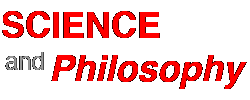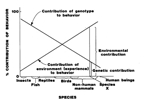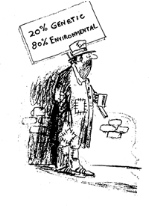Reading on: Sociobiology
Wilson, E. O in Sociobiology and Behavior by David Barash, Elsevier, New York, 1977 [excerpt — 540 words]
The purpose of sociobiology is not to make crude comparisons between animal species or between animals and men, for example simply to compare wolf and human aggression or slavery in ants as opposed to that in men. Its purpose is to develop general laws of the evolution and biology of social behavior, which might then be extended in a disinterested manner to the study of human beings. In the same way that biologists have learned about heredity from the study of fruit flies and the little bacterium E. coli and applied the principles of human heredity, we expect to extend such general principles of sociobiology as can be devised to assist in the explanation of human behavior.
The advent of human sociobiology is not central to the new discipline but it is clearly the most problematic and generally interesting development to emerge from the new discipline, and it deserves a special comment. The evidence is very strong that there does exist a human biogram, a pattern of potentials built into the heredity of the species as a whole.
In some cases we vary very little. The facial expressions used to express the basic emotional expressions appear to be the same across all cultures. Other transcultural traits include the incest taboo, the use of bodily ornaments in multiple forms of social display, and the construction of elaborate kinship rules. Homo Sapiens shares with other social mammals a tendency toward male dominance systems, a sexual division of labor, prolonged maternal care, and an extended socialization of the young based in good part on social play.
It is vital not to misconstrue the political implications of such generalizations. To devise a naturalistic description of human social behavior is to note a set of facts for further investigation, not to pass a value judgment or to deny that a great deal of the behavior can be deliberately changed if individual societies so wish.
In other traits human beings are of course much more variable, most notably in the details of language, technology, and fashion. Human behavior is dominated by culture in the sense that the greater part, perhaps all, of the variation between societies is based on differences in cultural experience. But this is not to say that human beings are infinitely plastic. Even during periods of relative isolation human societies did not drift apart in the manner of stars in an expanding universe. When compared with the thousands of other social species, human beings can be seen to operate within limits. They are social in a way that is basically mammalian yet distinctive among the mammalian species. The human constraints appear to have evolved from a mammalian plan over the past several millions of years, during which our ancestors lived in a hunter-gatherer economy.
To understand that evolutionary history and the contemporary biogram that it produced is to understand in a deeper manner the construction of human nature, to learn what we really are and not just what we hope we are, as viewed through the various prisms of our mythologies. Assisted by sociobiological analyses, a stronger social science might develop. An exciting collaboration between biologists and social scientists appears to have begun.




